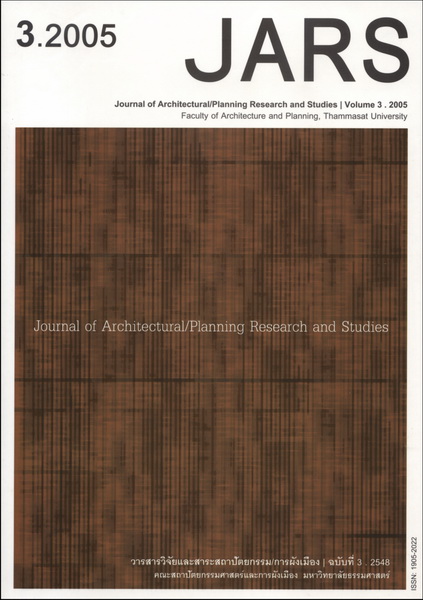Computer Aided Roof Tile Restoration Software Development Using Monte Carlo Method
Main Article Content
Abstract
Computer aided design software on roof tile restoration of historical architecture in this decade are applied only in feature of presentation like 3D modelling, and rendering. But for architectural conservation design process, architects spend much time for pattern design, and color combination from old and new tiles.
This roof tile restoration software development tried to apply Monte Carlo Method into core program to make new feature different from traditional CAD software for architects in natural mixed colors pattern design. The user interface of this software use common human-computer interaction by mouse click to make architects just only input ratio of mixed colors, then software will automatically places different old and new colors of roof tile to roof panel just in 1 click, and can display installed roof tile panel in both 2D and 3D view. This object oriented programming based software using C++ Language, OpenGL Graphic Library, and Qt User Interface Library is very flexible to make advanced combination that composed by more than 2 colors in any proportions, and convenience to add more features on calculations.
Downloads
Article Details

This work is licensed under a Creative Commons Attribution-NonCommercial-NoDerivatives 4.0 International License.
All material is licensed under the terms of the Creative Commons Attribution 4.0 International (CC-BY-NC-ND 4.0) License, unless otherwise stated. As such, authors are free to share, copy, and redistribute the material in any medium or format. The authors must give appropriate credit, provide a link to the license, and indicate if changes were made. The authors may do so in any reasonable manner, but not in any way that suggests the licensor endorses you or your use. The authors may not use the material for commercial purposes. If the authors remix, transform, or build upon the material, they may not distribute the modified material, unless permission is obtained from JARS. Final, accepted versions of the paper may be posted on third party repositories, provided appropriate acknowledgement to the original source is clearly noted.
References
John D. Gilleard, John Myers, Olugbemiga A. Olatidoye. (1990). “Computer Applications in Architectural Conservation.” ACADIA Conference Proceedings, 187-199.
Santiago Sanchez, Alberto Zulueta, Javier Barrallo. (1997). “CAAD and Historical Buildings: The Importance of the Simulation of the Historical Process.” eCAADe Conference Proceedings.
Hwa-Ryong Lee. (1999). “The Changing Face of Architectural Computing Research.” eCAADe Conference Proceedings, 11-17.
Justin Legakis, Julie Dorsey, Steven Gortler.(2001). “Feature-based cellular texturing for architectural models.” ACM Conference Proceedings on Computer Graphics and Interactive Techniques, 309-316.
Rajeev Motwani, Prabhakar Raghavan. (2001). “Randomized algorithms.” ACM Journal on Computing Surveys. 28(1), 33-37.
Paul S. Heckbert. (1984). “Survey of Texture Mapping.” IEEE Conference Proceedings on Computer Graphics & Applications, 56-67.
Marc Pollefeys, et al. (2001). “Image-based 3D acquisition of archaeological heritage and applications.” ACM Conference Proceedings on Virtual reality, archeology, and cultural heritage, 255-262.
Chen-Kai Tang, et al. (2001). “The visual harmony between new and old materials in the restoration of historical architecture: A study of computer simulation.” CAADRIA Conference Proceedings, 205-210.
Murali Paranandi. (1995). “Roof Modeling Using Architectural Semantics Paradigm.” ACADIA Conference Proceedings, 333-350.


